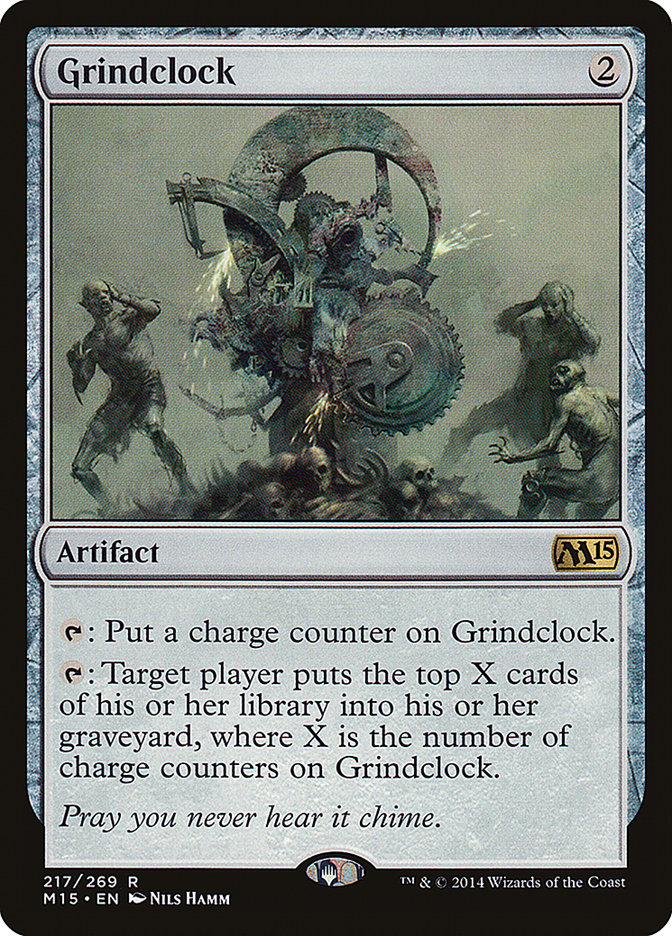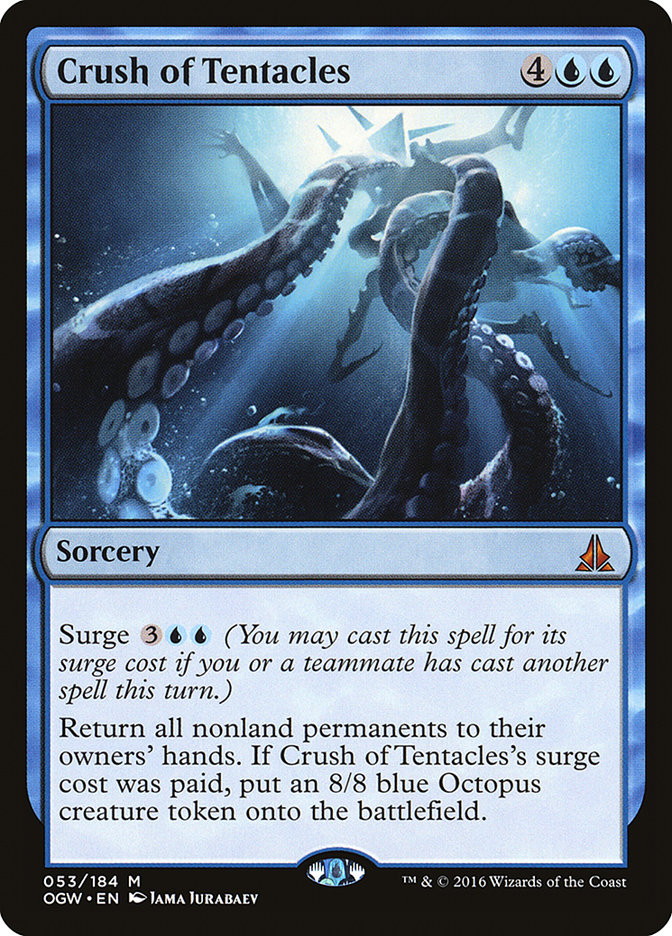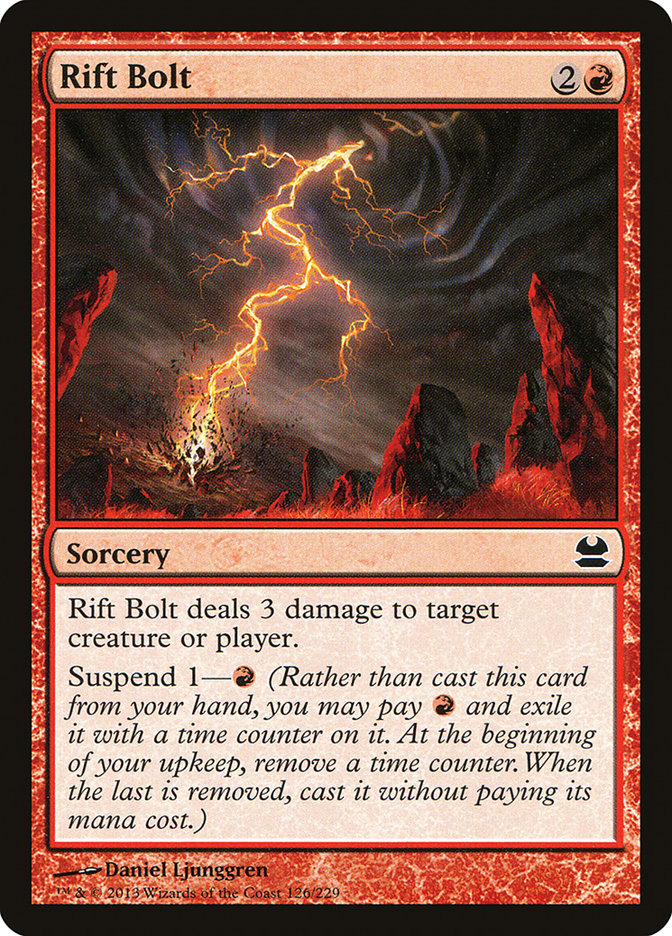Mastery is achieved when “telling time” becomes “telling time what to do.”
Racing the clock can have several meanings in Magic; most commonly it refers to how many turns it will take to end the game. “I had them on an X-turn clock” is a phrase that gets thrown around a lot in Magic, but understanding the depth of The Clock goes much deeper than Magic tournament jargon.
Last weekend at the StarCityGames.com Invitational in New Jersey, I took a calculated risk in Modern by registering G/W Hexproof:
Creatures (12)
Lands (21)
Spells (27)

In the Modern Open, I wanted to finish in the Top 8 or be done by the fourth round. While I was initially worried that playing G/W Hexproof for fourteen rounds (fifteen total rounds of Swiss with a Round 1 bye) would be like rolling dice, the deck actually proved to be an excellent mental exercise in understanding the time required to kill an opponent before dying.
The Clock
When people describe the clock they were presenting, it is to explain how many turns it will take for their threat to end the game. If the only creature on the battlefield is a single copy of Expedition Envoy and nobody has lost life yet, that means the opponent is on a ten-turn clock.
Real games of Magic are never so cut-and-dried and there are all kinds of variables to consider when understanding how to change the clock. Sometimes the opponent having a faster clock or they need to be killed faster than your current clock can possibly accomplish. These are the games where understanding the clock is instrumental in beating the buzzer.
Understanding the Clock
Standard is dominated by creature combat and understanding how the combat step works (in relation to deciding games) is an important step to take for improvement.
In decks that are more aggressively slanted, the damage output and how it affects whether or not it will kill the opponent is important to consider when declaring attacks, leaving creatures back to block, or even deploying threats onto the battlefield.
Imagine you find yourself in the following scenario; it’s turn 3 and you’ve just played your land for the turn.
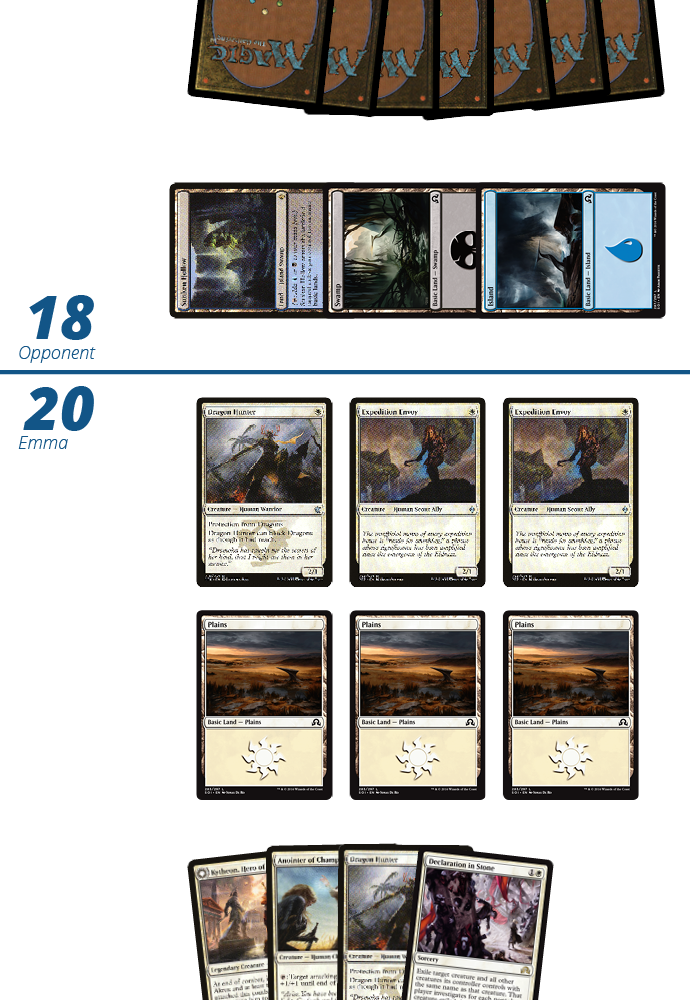
On your opponent’s turn, they cast a copy of Read the Bones, bottoming both cards on the scry 2, and passed.
At a glance it may seem clear to play the three one-drops, attack for six, and pass, but this doesn’t actually accomplish very much.
After this attack step the opponent will be reduced to twelve life.
The following turn will see an attack for eleven among the six creatures on the battlefield (or ten plus one from the Anointer of Champions’s ability). This means that the opponent is on a three-turn clock in this scenario.
Without casting any more creatures, the clock stays exactly the same. The six power worth of creatures on the battlefield is currently presenting a three-turn clock that will kill the opponent. This means that there is little reason to further extend into a Languish from the opponent and it is better to hold back a hand’s worth of creatures to rebuild after their potential Languish.
This scenario is turned on its head against a deck that regularly produces creatures to block with or that doesn’t play multiple sweepers. Playing creatures becomes more advantageous when it’s harder to get punished for overextending and there are cards that reward you for playing out your hand (see: Kytheon, Hero of Akros and Hanweir Militia Captain), but doing combat math gets a bit hairier relative to the number creatures that are introduced to the battlefield.
Speeding Up the Clock
Modern as a format is generally condensed into the first four or five turns deciding who is going to win a game. The Jeskai Control deck may not actually attack with Emrakul, the Aeons Torn until turn 7 or 8, but if the game reaches that stage, there was likely a turning point in which the Jeskai Control deck answered the opposing deck’s primary threat or pulled so far ahead in cards that the opponent didn’t have a realistic shot at winning the game.
Sometimes the only way to beat the opponent is to do everything in your power to put as much damage on the table as possible in order to try to kill the opponent as quickly as possible.
In the aforementioned scenario with Mono-White Humans, it would be more advantageous to play out all of the creatures in your hand against a deck like U/G Crush that won’t have the ability to wipe all of the creatures off the battlefield with a single four-mana spell. Against these decks it becomes a race against an intangible clock to try to kill the opponent before they present an insurmountable advantage.
The U/G Crush deck doesn’t really fight on a fair axis in Standard and tends to use a combination of Den Protector and Crush of Tentacles to make it impossible for “fair” creature decks to ever get an attack step with creatures on the battlefield (that aren’t suffering from summoning sickness).
In these matchups, if you find yourself in the role of the aggressor, you must do everything in your power to go all-out aggressive and reduce the opponent to zero life as quickly as possible, with little consideration for interaction on the opponent’s side.
To draw from my experiences last weekend, I found myself playing against Tron multiple times throughout the tournament, an unfortunate happenstance for many reasons, most notably due to Hexproof’s weakness to Oblivion Stone coupled with Ugin, the Spirit Dragon being literally unbeatable for Hexproof.
Over the course of the tournament, it became apparent that the only way to regularly beat Tron was to mulligan to hands that either had multiple hate cards (Stony Silence, Suppression Field, Gaddock Teeg) or could kill the opponent by the fourth turn of the game. It felt strange knowing that the following hand was unkeepable in the matchup:
Many of the matchups in Modern revolve around racing these kinds of scenarios and otherwise amazing hands go from ideal to incredibly lackluster within the context of a single opponent. Despite having all of the “pieces” needed for the archetype to function (a creature with hexproof, mana, and enchantments), the hand doesn’t have a high output of damage early that would result in killing the opponent before they play Oblivion Stone; Ugin, the Spirit Dragon; or Ulamog, the Ceaseless Hunger.
In a deck like Hexproof, many of the cards have a potency that is affected by what else has happened in a game or how spells are sequenced around each other. Ethereal Armor, for example, is generally going to put out the most damage per mana, but that won’t always lead to the biggest life swing on a creature when factoring for the lifelink that Daybreak Coronet or Spirit Link can provide. This doesn’t even account for the games during which it is better to hold Ethereal Armor until later in order to conceal from the opponent how much time they have until you can present lethal.
Consider the following opening hand:
In this particular instance it is generally incorrect to lead with the Ethereal Armor; with this configuration of cards it will oftentimes be correct to play the Ethereal Armor last. The driving thought behind this line of play is the plan’s resiliency compared to the damage lost by leading with the Umbra and the Rancor. It becomes easier to understand when envisioning the different combinations of Auras that can be on the battlefield at the conclusion of the second turn:
· A Gladecover Scout with an Ethereal Armor and a Hyena Umbra is a 4/4 with first strike, totem armor, and hexproof.
· A Gladecover Scout with an Ethereal Armor and a Rancor is a 5/3 with first strike, trample, and hexproof.
· A Gladecover Scout with a Rancor and a Hyena Umbra is a 4/2 with first strike, trample, totem armor, and hexproof.
Of those three scenarios, it is the hardest to interact with the third of those options through avenues that aren’t exactly Liliana of the Veil; even in that case, it is easy to see when the opponent is on a Liliana deck and instead just cast another hexproof creature to use as fodder for Liliana’s -2 ability.
This crosses a bit into cost-benefit analysis more than measuring a clock, but the first few turns being mapped out from the start of the game is an important part of properly analyzing the amount of damage that needs to be dealt each turn in order to put the opponent to exactly zero. It’s much better to be careful and have an opponent end up at exactly zero on turn 4 or 5 instead of being reckless and dealing enough damage to put the opponent at negative six life. There aren’t any special prizes for running backwards into the end zone by dealing extra points of damage.
Affecting the Opponent’s Clock
Many times there won’t be many opportunities to change your own clock due to constraints on mana or effects of cards being linear. Most of the cards in a Burn deck are going to deal the amount of damage printed in the card’s text box and that isn’t going to change based on the order that they are cast or during which phase the spell is pointed at the opponent. What they can impact, however, is how quickly the opponent’s cards kill you.
Assume that you are playing a Mardu Burn deck that is creature-light and primarily focused on using actual instants and sorceries to kill the opponent.
After you suspend a Rift Bolt on the first turn, your opponent leads with Wild Nacatl. From this point it is oftentimes correct to use the Rift Bolt on your upkeep to kill the Wild Nacatl. The damage that your Rift Bolt will deal is always going to be worth three points, but a Wild Nacatl on the opening turn is worth three points of damage every turn that it survives and isn’t blocked. This means that (assuming the game goes at least three more turns), the Wild Nacatl is going to be worth nine life by herself!
Even in scenarios where the Wild Nacatl will deal a disproportionate amount of damage compared to the Rift Bolt, killing it isn’t always correct and is contextual based on the hand of spells. If there is a Searing Blaze in hand, then it is obviously beneficial to point Searing Blaze at the Nacatl and Rift Bolt at the opponent’s face.
Disrupting the opponent’s clock is generally the proper path to take when the average card in your library will be more beneficial to you than the average card in your opponent’s library will be beneficial to them. It is rare that an aggressive Burn deck will waste precious burn spells on a control deck’s creatures. It’s more advantageous for the aggressive strategy to try to close the game out before the opponent has a time to start playing their haymakers.
On the other side of the coin, it is common to see midrange decks use removal spells to bridge the gap between the early threats that aggressive decks will play and the four- and five-mana-cost threats that tend to come from decks utilizing this type of methodology in their deckbuilding. Even these decks tend to be wary of how they sequence their spells.
One of the more common lines of play that is questioned by newer players is when a player with a removal spell takes damage from a creature, only to use the removal spell on the same creature during the end step of the same turn.
Picture yourself in the following situation with Travis Woo’s deck from Grand Prix Portland:
Planeswalkers (11)
Lands (26)
Spells (23)

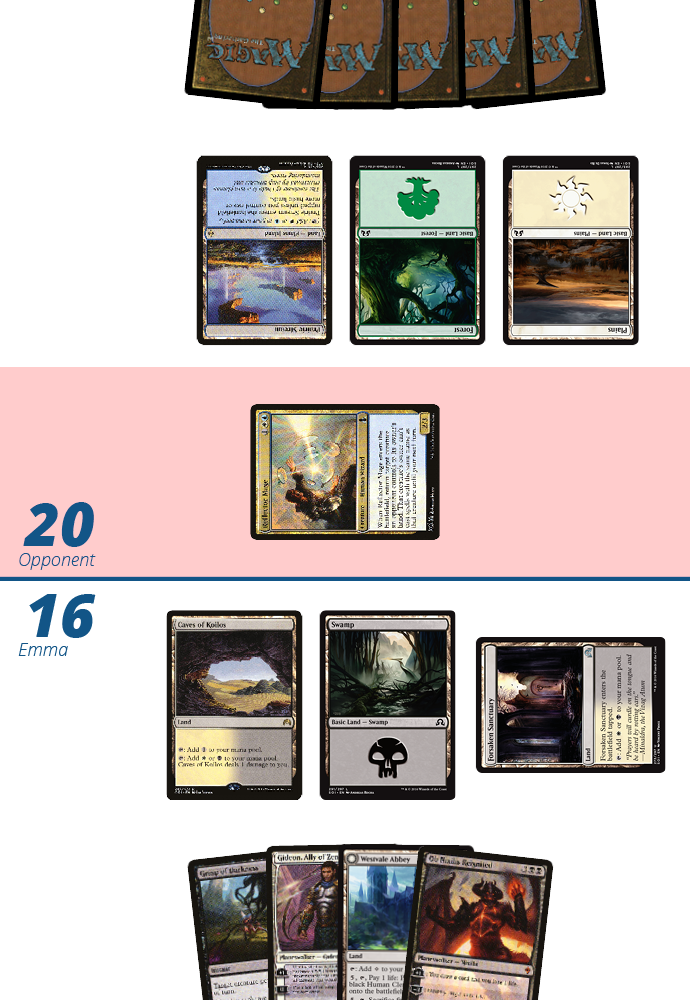
Despite both players having a slower start, the Bant Company player is attacking with a Reflector Mage, and now comes the time to decide if the Grasp of Darkness in hand should be used to prevent the damage that Reflector Mage will deal or saved for another prospective threat.
In this instance it is correct to take the damage from Reflector Mage and wait to see what the opponent does. Reflector Mage will be outclassed shortly by Gideon, Ally of Zendikar, and if the opponent plays a Tireless Tracker, the game will likely spiral out of control. Tireless Tracker has the ability to net the opponent several cards before Ob Nixilis Reignited comes down to clean it up later, and in that scenario an Archangel Avacyn could save the Tireless Tracker from Ob Nixilis Reignited.
In the case that the opponent plays a creature after the Reflector Mage, it is likely correct to kill whatever creature enters the battlefield, be it Sylvan Advocate, Tireless Tracker, or Jace, Vryn’s Prodigy, due to the fact that most of the cards in your library are going to be more powerful than the opponent’s cards and keeping the battlefield clear will result in the planeswalkers in the W/B Control deck sticking around and making the game snowball out of control.
Applying Everything in Tandem
All of these bits of theory are things to be entwined within one another and part of what makes Magic as complex and wonderful as it is. One of the shining examples of navigation based on mapping out a clock is Ross Merriam vs. Patrick Sullivan at the StarCityGames.com Open in Los Angeles from 2012.
In the third game of the match (starting at about 18:30 in this video), Sullivan assess how much damage he can take from Merriam’s attacks (and his own Sulfuric Vortex) before having exactly enough resources to finish off Ross Merriam while he (Sullivan) is at exactly one life.
Whenever playing a game of Magic, remember that sometimes, past all of the fantasy and tentacle monsters, Magic is a math game and all you’ve gotta do is get your opponent to zero.



